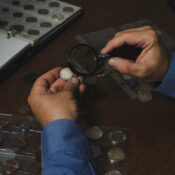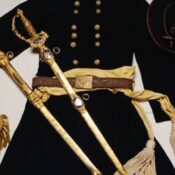
Uranium Glass
What is Uranium Glass?
German chemist Martin Heinrich Klaproth discovered uranium in 1789, and the first documented reference to uranium glass dates from 1817. The addition of uranium to glass was popularized by Josef Riedel starting in 1834, after which it was regularly incorporated as a yellow-green colorant in all sorts of glassware. Riedel created a brilliant yellow, called Annagelb, and a brilliant green, called Annagrun, named for his wife, Anna.
Uranium was widely used in glass, glazes, and enamels on decorative objects such as buttons, jewelry, glassware, painted porcelain, and lamps until the 1940s before the adverse effects of its radioactivity were understood.
Why was Uranium used in Making Glass?
Incorporating uranium into the glass mixture produced extraordinarily brilliant new colors capable of withstanding high temperatures. In combination with other elements, it produced a variety of colors—opaque yellow/white glass (also known as custard glass), clear brilliant yellow or amber, clear brilliant green, dark green, black, and bright red-orange (the orange-red shade of Fiesta tableware is a well-known example of the use of uranium in ceramic glazes).
Is Uranium Glass Dangerous?
While we now know that uranium is dangerous to our health, this was not always the case, and it wasn’t until 1894 that regulations were put in place regarding its use and necessary safety precautions. Prior to this, uranium was believed to have healing properties. Mildly radioactive waters and sands were used in health spas and small doses of uranium derivatives were used for the treatment of certain ailments.
The first steps in controlling the use of uranium in medical applications began in the 1890s. By the early 1940s, the United States introduced legislation outlining safeguards and controls for radioactive substances. From this point forward, the use of non-depleted uranium for glazes, enamels, and glasses was discontinued worldwide.
It is important to note that radioactive materials occur naturally in soil and rocks, and air contains traces of radon, thus exposing us to naturally occurring background radiation in our daily lives. The amount of radiation emitted from most Uranium glass is so small you can still use it as a drink or food vessel.



